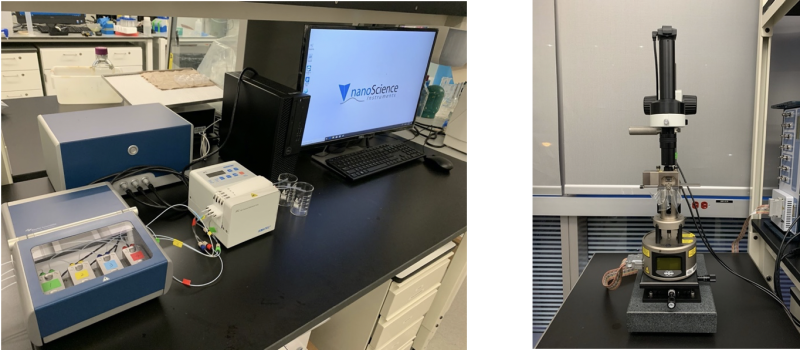Interaction of colloidal particles with environmental surfaces
Interaction of colloidal particles with environmental surfaces (Prof. Liu)
Motivation
Colloids are dispersions of small particles with dimensions spanning both “nano” and “micro” size ranges. Colloidal particles are relevant to a variety of chemical engineering and environmental processes. For example, a major objective in water and wastewater treatment is the removal of pathogens, which are colloidal particles, via filtration processes. In environmental remediation, particulate amendments (such as colloidal activated carbon) are injected into aquifers to remediate groundwater polluted by organic contaminants, such as per- and polyfluoroalkyl substances (PFAS). The SARS-CoV-2 viruses, when dispersed in water, are also environmental colloids.
Proposed Research
We study aggregation, deposition, and remobilization of colloids in aquatic environments, with an emphasis on the impact of environmental complexity (such as surface characteristics and perturbation of solution chemistries) on colloid transport and interactions with environmental surfaces. For the use of colloidal activated carbon for remediating groundwater contaminated by per- and polyfluoroalkyl substances (PFAS), we propose to study the transport of the colloidal particles in saturated porous media to gain a better understanding of the long-term effectiveness of the remediation barrier. For pathogens, we propose to investigate how they interact with environmental surfaces, to help better understand their transmission in the environment. We also employ atomic force microscopy techniques to quantify the interfacial forces between colloids and surfaces.
Previous Research Findings
Our previous research has developed a novel method to prepare nanosized colloidal probes for atomic force spectroscopy (AFM) measurement. This method leverages the in-situ chemical reduction on polydopamine to grow silver nanoparticles on the AFM tips. Using such colloidal probes, we will be able to directly probe interfacial forces between nanosized particles and environmental surfaces.
Research Facilities
Figure (Left) Quartz crystal microbalance with dissipation monitoring, which is capable of detecting mass change on surfaces at a sensitivity level of ng/cm2. The instrument can also provide useful insights into the fluid-solid interfaces. (Right) Atomic force spectroscopy, which is capable of high-resolution imaging and quantifying interfacial forces in aqueous environments.





